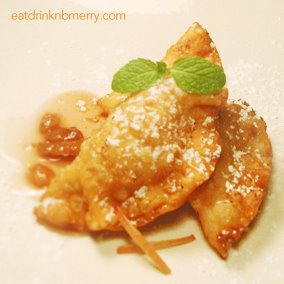
The Gift of Gluttony continues as my friend HL came over for dinner last night since she had prior commitments during the holiday season. I decided to stray away from my usual meat dishes and cook something from the sea. One of my favorites is the Patagonian Toothfish, otherwise known as the Chilean Sea Bass. Americans adapted that name to increase its marketability. After all, that name does sound pretty vicious. Yes I know, it’s on the list of extinction, but it’s so delectable. Watch this corny flash cartoon on “Taking a Pass on the Chilean Sea Bass”. Nice title. So yeah, in 5 years it could be extinct. Which means I better hurry up and eat as much as I can by the time I’m 32. P.E.T.A. is so after me now. Haha.
One of my favorite Japanese fish dishes is the Miso Black Cod, which I had the pleasure of eating at Nobu Next Door in New York City. It doesn’t require a ridiculous 6 month reservation in advance either. You can simply walk in and enjoy equally delicious fare. The fish was served on top of a hot mixture of soy sauce/black bean with green onions poached in hot oil. I devoured this dish so quickly.
As if I didn’t learn my lesson from shopping for veal shanks, I, again, checked out the prices at Bristol Farms and Whole Foods. $41 a pound!!! Jesus. I went to the next best place – 99 Ranch Market in Arcadia, and found my CSB for $12.99/lb. I got a huge 1.75 lb piece for about $24. I gave myself a high-five. Wait, wouldn’t that be considered clapping?
I cut the huge block of CSB into 4 fillets and marinated them in sake, mirin, miso paste and sugar. It’s important to know what kind of miso paste you buy. I unfortunately bought the sweet kind infused with dashi. Overly sweet. I let the fillets ‘swim’ one last time for 3 days.
Party time…
(1) Gently wipe off any remaining miso paste on the fillets and broil them till it’s somewhat brown on top. It should take no longer than 10 minutes or you’ll get a black fish.
(2) For the CSB sauce, I simmered some soy sauce, Chinese black beans, sake, 3 ginger slices and tons of sugar. I added corn starch to speed up the thickening process. You can add a dash of sesame oil for a nice touch.
I served the fish with some fried fish cakes, fried oyster mushrooms and tofu matchsticks (tempura).
Thanks for reading.



